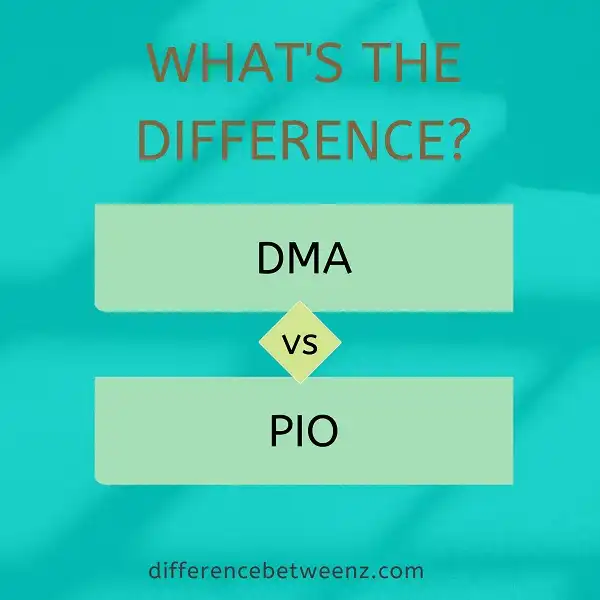When choosing an appropriate storage protocol for your system, it is important to understand the differences between DMA and PIO. This article will help explain the key distinctions between these two types of protocols. After reading this article, you should have a clear understanding of when to use each type of protocol for your system.
What is DMA?
DMA is an acronym for Direct Memory Access. It is a feature of computer systems that allows certain hardware components to access memory directly, without having to go through the CPU. This can greatly improve performance, as it frees up the CPU to perform other tasks. DMA is often used for high-speed devices such as hard drives and network adapters. It can also be used for devices that need to access memory at irregular intervals, such as sound cards. DMA is a valuable tool for maximizing system performance, and it is often used in mission-critical applications where every last drop of performance is essential.
What is PIO?
PIO is an input/output operation in which the CPU executes a program to control peripheral devices. PIO can be either synchronous or asynchronous. Synchronous PIO uses a clock signal to coordinate data transfers, while asynchronous PIO does not. PIO is generally slower than using dedicated hardware for input/output operations, but it is more flexible. PIO is commonly used for operations such as data collection and storage, communication with devices, and computer memory access.
P 10 IO devices are connected to the CPU through an input/output channel. The channel consists of a data bus, address bus, and control bus. The data bus carries data between the CPU and the IO device. The address bus carries address information between the CPU and the IO device. The control bus carries control signals between the CPU and the IO device. PIO is typically used for slow-speed devices such as keyboards, printers, and disk drives. PIO can also be used for high-speed devices such as networks and modems.
Difference between DMA and PIO
DMA (Direct Memory Access) and PIO (Programmed Input/Output) are two different ways that data can be transferred between the computer’s memory and an external device. DMA is a hardware-based process that allows data to be transferred without involving the CPU.
This can result in a significant performance boost, as the CPU is free to perform other tasks while the DMA controller handles the data transfer. PIO, on the other hand, is a software-based process that uses the CPU to perform the data transfer. While this method is generally slower than DMA, it does have the advantage of being more compatible with a wider range of devices.
Conclusion
So, what is the difference between DMA and PIO? In a nutshell, DMA allows devices to access memory without CPU intervention, while PIO requires CPU assistance. This can result in faster data transfers and improved system performance. If you’re looking for ways to improve your system’s overall efficiency, implementing a DMA controller may be one of the best steps you can take.


